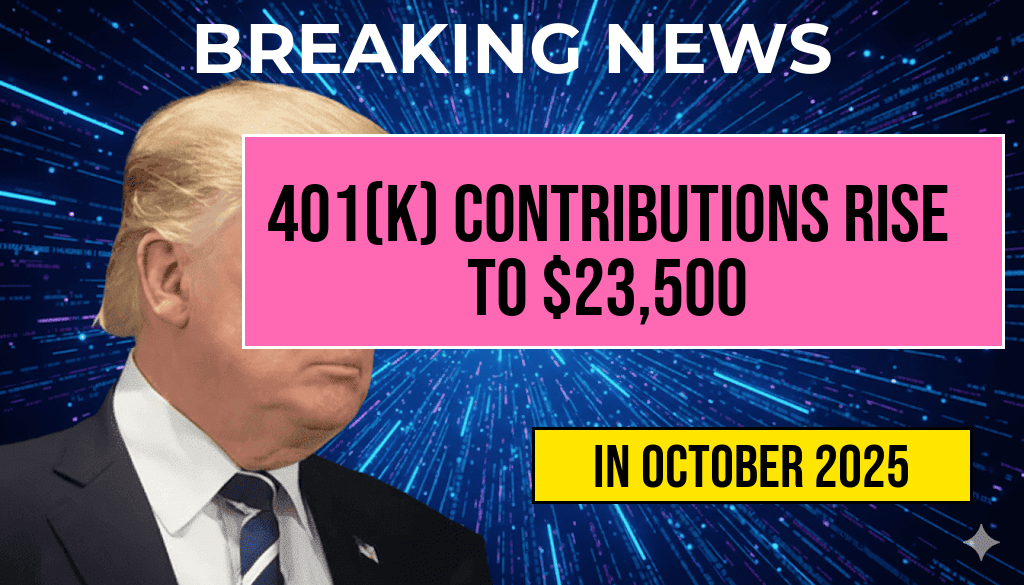In a significant update for retirement savings, the IRS announced that employees will be able to increase their 401(k) contributions to $23,500 in 2025, a notable increase from the current limit of $22,500. This change reflects ongoing adjustments aimed at helping Americans save more for retirement amidst rising living costs and inflation concerns. The increase in contribution limits is expected to benefit millions of workers, particularly younger employees just starting their careers and those looking to catch up on savings as they approach retirement. This new limit aligns with the IRS’s periodic review of contribution thresholds, which are influenced by inflation and overall economic conditions.
Understanding the New Contribution Limits
The new limit for 401(k) contributions will officially take effect on January 1, 2025. The increase of $1,000 allows employees to set aside more pre-tax income, effectively enhancing their retirement savings potential. With the rising costs of living and increasing longevity, this adjustment is crucial for individuals aiming to secure their financial future.
How the Increase Affects Different Age Groups
Different age groups will feel the impact of this adjustment in various ways:
- Younger Workers: For those in their 20s and 30s, the higher limit provides an opportunity to jumpstart their retirement savings early on. By maximizing contributions now, younger employees can benefit from compound growth over several decades.
- Mid-Career Professionals: Individuals in their 40s and 50s may use the increased limit to bolster their retirement funds as they near their retirement age. This group often faces the challenge of catching up on savings.
- Older Employees: Those aged 50 and above can also take advantage of catch-up contributions, which currently allow an additional $7,500. This means that older workers could potentially contribute up to $31,000 in 2025.
Comparative Analysis of Contribution Limits
| Year | Employee Contribution Limit | Catch-Up Contribution (Age 50+) |
|---|---|---|
| 2022 | $20,500 | $6,500 |
| 2023 | $22,500 | $7,500 |
| 2025 | $23,500 | $7,500 |
Implications for Employers and Plan Sponsors
Employers and plan sponsors also need to prepare for these changes. They will need to update their payroll systems and communicate the new limits to employees effectively. In addition, companies may want to consider reviewing their retirement plan offerings to ensure they remain competitive, especially in attracting and retaining talent.
Encouraging Better Retirement Planning
The increase in 401(k) contribution limits is part of a broader trend aimed at encouraging better retirement planning among American workers. Many financial experts advocate for higher contributions, emphasizing the importance of saving more to counteract potential shortfalls in retirement income. Employers can play a significant role by offering educational resources and tools to help employees understand the benefits of maximizing their retirement savings.
Additional Resources for Employees
For those interested in maximizing their 401(k) contributions, several resources are available:
As employees prepare for the changes ahead, understanding the new contribution limits and their implications can pave the way for a more secure financial future. The increase in 401(k) contribution limits serves as an important step in promoting financial literacy and encouraging individuals to take control of their retirement savings strategies.
Frequently Asked Questions
What is the new contribution limit for 401(k) plans in 2025?
The new contribution limit for 401(k) plans in 2025 is set at $23,500.
Who can benefit from the increased contribution limit?
All eligible employees participating in a 401(k) plan can benefit from the increased contribution limit, allowing them to save more for retirement.
How does the contribution increase affect retirement savings?
The increase in 401(k) contribution limits allows employees to save more money on a tax-deferred basis, potentially leading to greater retirement savings over time.
Are there any changes to employer matching contributions?
While the article focuses on employee contribution limits, employers may also adjust their matching contributions policies in response to the increased limits, but this varies by company.
When will employees be able to start contributing the new limit?
Employees will be able to start contributing the new limit of $23,500 beginning in the year 2025.

Leave a Reply